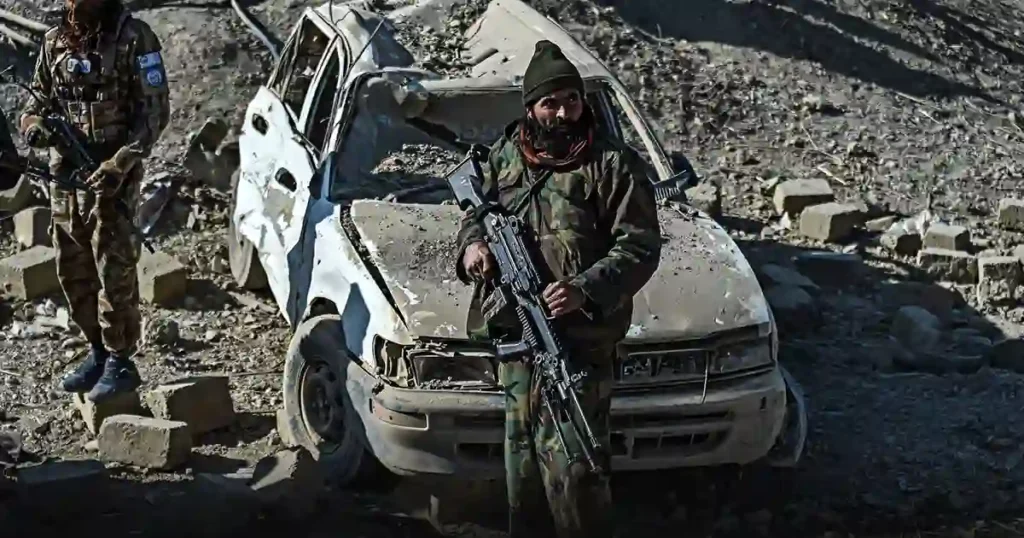Recent developments in the conflict-prone regions of Afghanistan and Pakistan have drawn international attention as tensions between the two neighboring countries reach alarming heights. The situation intensified following a series of Pakistani airstrikes in Afghanistan’s Paktika province, which reportedly resulted in significant civilian casualties, including the loss of women and children. In response, Afghanistan’s Ministry of Defense launched retaliatory strikes on Pakistani positions, marking a sharp escalation in cross-border hostilities.

A History of Strained Relations
Afghanistan and Pakistan share a 2,670-kilometer border, commonly known as the Durand Line. This boundary, drawn during British colonial rule, has long been a source of tension. The border traverses Pashtun tribal regions, and many Pashtuns on both sides of the line have resisted the division imposed by the Durand Line. This historical discord has fueled animosity and mistrust between the two nations.
In the post-2001 era, relations between Kabul and Islamabad became further complicated by the rise of the Taliban insurgency. Pakistan has often been accused of harboring and supporting Taliban factions to exert influence in Afghanistan, while Islamabad blames Kabul for sheltering anti-Pakistan militants. These mutual accusations have perpetuated a cycle of violence and hostility.
The Paktika Airstrikes
The recent crisis began when Pakistani airstrikes targeted areas in Afghanistan’s Paktika province. According to local reports, the strikes caused extensive damage, claiming the lives of several civilians, including women and children. Eyewitness accounts and videos shared on social media showed the aftermath of the strikes, with homes reduced to rubble and distraught families mourning their loved ones.
Pakistan’s military justified the strikes as operations against militant hideouts used to plan and execute attacks on Pakistani soil. The Pakistani government has long accused Afghanistan of failing to curb the activities of militant groups, particularly the Tehreek-e-Taliban Pakistan (TTP), which Islamabad claims operates freely in Afghan territory.
Afghanistan’s Retaliation
In a swift response, Afghanistan’s Ministry of Defense confirmed launching retaliatory strikes on Pakistani positions. While details of the operation remain sparse, the Taliban’s official stance emphasized that the response targeted militant hideouts used for cross-border attacks. “We will not tolerate any violation of our sovereignty,” said a senior Taliban official, highlighting the regime’s intent to project strength and defend Afghan territory.
The Taliban’s response reflects a complex dynamic. Since their return to power in August 2021, the Taliban have faced challenges in governing a war-torn nation while navigating contentious relations with neighbors, including Pakistan. Despite historical ties between the Taliban and Islamabad, recent developments suggest a growing rift, fueled by Pakistan’s demands for stricter action against cross-border militancy.
The Role of the Tehreek-e-Taliban Pakistan (TTP)
Central to the escalating tensions is the TTP, an umbrella organization of various militant groups aiming to establish strict Islamic rule in Pakistan. The TTP has intensified attacks in Pakistan’s tribal areas and urban centers, targeting security forces and civilians alike. Islamabad claims that the TTP operates from Afghan soil with tacit support or negligence from the Taliban regime.
For its part, the Taliban denies harboring the TTP, insisting that Afghanistan’s territory will not be used for activities against any country. However, analysts suggest that the Taliban’s ideological alignment with the TTP and internal power dynamics may limit their willingness or ability to confront the group decisively.
Civilian Impact and Humanitarian Concerns
The civilian toll of these cross-border conflicts has been devastating. Families in Paktika province continue to reel from the destruction caused by the Pakistani airstrikes. Displaced residents have sought refuge in makeshift shelters, grappling with limited access to food, clean water, and medical care.
Humanitarian organizations have called for an immediate cessation of hostilities, emphasizing the need to protect civilian lives. “The international community must intervene to ensure accountability and prevent further loss of life,” said a spokesperson for Human Rights Watch. The United Nations has also expressed concern, urging both countries to prioritize dialogue over violence.
Regional and Global Implications
The escalating conflict between Afghanistan and Pakistan has far-reaching implications for regional stability. Both countries play critical roles in South Asia’s geopolitical landscape, and prolonged hostilities could destabilize the region further. The situation also poses challenges for neighboring countries, including Iran, China, and India, all of which have vested interests in Afghanistan’s stability.
International stakeholders, including the United States and Russia, have called for restraint. The U.S. State Department emphasized the importance of addressing cross-border militancy through cooperative measures rather than unilateral military actions. Similarly, Russia, which maintains a complex relationship with the Taliban, urged both nations to engage in constructive dialogue.
The Path Forward
Resolving the conflict between Afghanistan and Pakistan requires a multi-faceted approach. Key steps include:
- Enhancing Border Security: Both countries must strengthen border management to prevent the movement of militants and illicit goods. Collaborative mechanisms, such as joint border patrols and intelligence sharing, could help address mutual concerns.
- Fostering Dialogue: Diplomatic engagement is essential to rebuild trust and address longstanding grievances. Mediation by neutral parties, such as the United Nations or regional organizations, could facilitate productive negotiations.
- Addressing Root Causes: Tackling the socio-economic conditions that fuel militancy is crucial. Investments in education, healthcare, and infrastructure can create opportunities for marginalized communities, reducing the appeal of extremist ideologies.
- Engaging the International Community: Sustained international support is vital to ensure accountability and provide humanitarian aid to affected populations. Global powers must prioritize peace-building efforts in the region.
Conclusion
The recent escalation in cross-border violence between Afghanistan and Pakistan underscores the fragility of peace in the region. While both nations face legitimate security concerns, military actions that harm civilians only deepen mistrust and perpetuate cycles of violence. A commitment to dialogue, cooperation, and addressing root causes of conflict is essential to achieve lasting peace. As the world watches, the actions of Afghanistan and Pakistan in the coming weeks will shape the trajectory of their relationship and the stability of South Asia.






